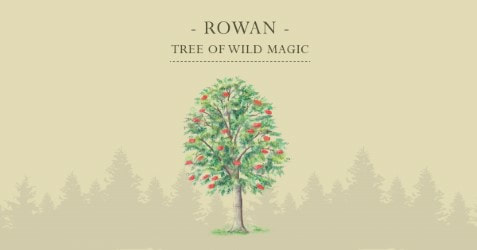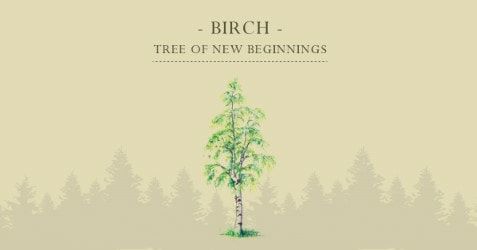Beltaine 1st May- 19th JunEIt is the hawthorn tree ( pictured above) which is the traditional marker of May, a guardian tree associated with the Sidhe/faerie folk and the fertility of the land. Beltaine is a time of great celebration, our ancestors who lived so much of their lives outdoors would have taken great delight in this time. At one time all fires would be allowed to go out and one central fire would be lit in the spiritual centre of the land ( Tara in Ireland for instance) then all other fires would be lit from it, the soul of the land awakening across the tribes. The main fire would become two and the cattle would be driven between them for purification. The great celebration would begin in earnest, the maypole erected as a phallic symbol of the fertility of the land. May Queens would weave garlands decorated with hawthorn blossom expecting to be courted by the men. Large fires, parades, dancing and singing would celebrate Beltaine which is the beginning of the summer and the fruition of the green world. This was the natural time for couples to be hand-fasted ( the marriage of two souls bound together by 5 cords of love representing the 5 elements, the essence of all life). This would be further consecrated as the two newlyweds would go into the woods and share their love. The idea of there being a special time for love-making which the green world supported and rejoiced in, meant an excitement filled the air and couples could let go. This almost allowed it to have an air of innocence, a youthfulness unfolding of the twinning of souls as the High King of the green world symbolically mated with the sovereignty of the land. This union of souls never need be restricted by gender as men join with men and women with women expressing their male and female aspects in ways that feels right for the individual. Beltaine Fire Ritual in your own Hearth. Taine means fire and Bel is either the name of a great Celtic God or a name meaning shining or brilliant. The core of its meaning therefore is a fire for the Otherworld, the bright realms and this is a time where you can enter heightened states of knowledge of the inner worlds. Therefore although traditionally it is a time to be out in Nature we can all celebrate Beltaine at home and on our own allowing the light of Nature to enter our hearts. An altar of flowers, herbs, leaves and barks can be a focal point. Light the fire or candle and invite the joy of summer to enter your life, become an adventurous teenager exploring new awakenings of soul. The fire or candle can be a focal point for purification and good intentions. Celebrate, be merry and enjoy this threshold of the year knowing Nature's exuberance is all around you and you are never truly alone, may you be lifted in Nature's warm embrace at this time. If you would like to learn more about Nature Connection or Tree Folkore explore our website's online courses with the link below. Beltaine Blessings.
1 Comment
Rowan- Tree of wild magicA bird flies over a steep mountainside and drops a Rowan seed that lands in a rock crevice which sprouts and gives life to a tree with creamy white clusters of flowers and bright red berries. Aptly named mountain ash the rowan is the tree that grows higher up a mountainside than any other native tree. It is not related to ash but shares the same feather-like leaves created by numerous leaflets on the same stalk. Various insects feed on its flowers and song birds including thrushes, redwings and fieldfares flock to feast on its berries. The Rowan truly is a delight of the eye and a tree worth exploring. The native Rowan is a tree of the wild uninhabited cold places of Britain. It grows on the windswept cliffs of the river Wye and Scotland producing scarlet red berries which birds gorge upon, and beautiful white flowers which insects feed from. In old stories it is guarded by giants and offers a bridge to the land of promise and eternal youth to one who dares approach it. For the Rowan stands as a threshold guardian, afeared by those with a tainted heart, the paramount tree of the Druids, Witches and Magicians, a protector of the green world whose use can bring joy or sorrow depending on who implements its magic! The Sorbus family to which rowan belongs is both fascinating and beautiful just like its stories of magic. You can see how it stands as a guardian, almost like a beacon of hope out on those unforgiving landscapes offering flower, fruit and shelter where there is little on offer. A very different species from the cultivated tree often seen in parks, roundabouts or roadsides. Its family include Britain’s rarest tree, the True Service Tree or Whitty Pear ( S.domestica) and the Wild Service (S.torminalis) which has more maple-like leaves and small pear-like fruits. In addition to these species there are up to 18 rare or endemic species of Whitebeam (S.aria) specific to a range of places from Devon to the Wye valley and the Isle of Arran to Wales and Ireland. Folklore of Rowan/ Mountain Ash Delight of the eye is Mountain Ash, owing to the beauty of its berries. Delight of the eye. Strength or friend of cattle, the Elm. Strength of cattle. Book of Ballymote 1391 Rowan is a natural progression from the study of Birch, both dominating trees in Scotland and both abundantly praised by the poets. The inclusion of Elm in the above kenning is explored over the page. Oisin, old and blind, and compelled to fast, asked a swine-herd , to guide him to a certain rowan tree, that he may feast on its berries. Irish texts society translation David Nutt 1908 A common theme explored in Celtic folklore is retiring to the woods at a certain stage in life. This seems to be a universal theme as Hindus recognise in their old age a period of time also to retire to the Forest which is representive of a time to contemplate and enjoy the fruits of the inner worlds now the body is ageing. Maybe this is why in the stories Rowan berries bestow youth to old age. Old age can be celebrated as a re-birth into the realms of the inner landscape, the soul or Tir na nOg, the land of youth. Traditionally this knowledge of the soul is guarded well and to continue with the story of Diarmaid and Grainne (mentioned in the Birch booklet) the tree of Dubhros that they encounter is guarded by Searbhan Lochlannach, a baleful giant who can only be killed by his own club! This theme of protection continues in the story of the Faery Rowan- tree: ‘No mortal may take a berry that grows on it... Fergus will have to guard this tree until he gets one who will guard it for him’ Interestingly enough it is a giant, Crom Duv, whom Fergus finds to continue the guardianship. He has a herd of goats and while guarding the tree obtains a herd of cattle. When Crom Duv takes his cattle to new pastures the faery Rowan is guarded by the Bull of the Mound and twenty- four fierce yellow cats! These common themes link us back to the opening kennings of this section which may be the essence of the tree in Celtic folklore. The kennings connect us to its beauty, and the use of the word ‘eye’ probably is referring to an inner beauty or inner gaze. The kennings also connect us to the land through their mention of cattle. Cattle were a status symbol, a currency as well as a symbol of the fecundity of the land. Beef would have been a luxurious meat for feasts as the herd were of such value both for milk and blood. Farming was a key to a more stable, richer way of life as each person knew their dependency upon it, creating a sacredness of farm animals. It is the swineherd that guides the great hero Oisin in his old age, the bull that protects the tree and the cattle and pigs which are featured in so many Celtic stories. Today domestic livestock still have a positive effect on the land maintaining old meadows, moors and downs as well as providing meat. This relationship between people, the land and animals was paramount to our ancestors. This means that the Rowan in folklore has a key status in the health and well-being of the land. This is further enhanced in the ritual of Tarbh Feis, which is sometimes used to divine the future King. The seer/poet spends the night on a platform made of rowan wrapped in a bull skin. Again this connection of the Rowan and cattle. The Elm is also mentioned in the kennings and it is a tree that would have been used for fodder, providing food for cattle. The Elm’s presence in the landscape can be seen in paintings like the Hay Wain by Constable, or in Brighton, East Sussex where its majesty continues in the living landscape shining like a guardian of the countryside. The third element coming into play is the King who played a key role as a caretaker of the ancient land, for a good reign would bring good health to crops and animals. The giants guarding the tree represent the oldest inhabitants of the land, the raw energy of the green world and its protection above all else; a world where we protect the wealth of the land passionately, where our heroes look to the farmers, crops and animals with loyal passion; where our kings wish to adhere to Nature’s laws above all else and show respect to the wise female elders; and where the sacred trees are honoured as guardians. This is the message of Rowan and is needed now more than ever! The Uses of Rowan This tree is a delight to those who have a love of nature and magic, and its wood and berries are considered to be protective and lucky charms. Rowan wood has a yellow tinge and is strong and flexible. Traditionally it was used to make tool handles and for smaller carved items. It is possible that like Whitebeam it was also used to make bows. Medicinally rowan bark is used for treating diarrhoea and its berries for sore throats. If you have enjoyed this article you may wish to sign up for our free newsletter packed with information on Trees, plants and connecting with nature. If you would like to explore Nature Connection and receive our free Newsletter packed with articles on Trees and plants please click below. Qualities of the Birch tree.
The Birch in folklore represents a fond love as well as being the tree of birth, initiation and gentle strength. Imagine yourself in the Birch grove allowing the flow of feelings and creative thought to arise. You see trees of silver bark and black branches, with dainty catkins and slender branches, and yet they grow in the harshest conditions and are often the first to colonise. * *n.b. It is important to acknowledge a tree like the Oak may well colonise a given area first but is slower growing and therefore not noticed in the early stages. In the spring the leaves unfurl in a delicate bright green and its sap when tapped is refreshing and healing. It is known that the cylindrical trunks of what we now call ‘silver’ birch ( Tennyson was the first to describe her thus) are ideal to make cots for new- born babies and the stiffer branches of the downy birch ideal for brooms. The tiny twigs and its bark both contain volatile oil which is perfect to light a new fire. The bark can also water proof roofs and make containers. All of these practical qualities paint a picture of a gentle tree of new beginnings, strong and dynamic and yet graceful and short-lived like the sting of young love. The Ogham name Beithe means being, or a Being, and the Birch grove in ancient stories and traditions is a place to connect with Other-worldly visitors. This connection is further enhanced as it is said to be the first Ogham inscription that was written to warn Lugh Lamfada that his wife was being taken to faerie land. Birch being the first letter inscription also makes sense when we also realise that the first books may have been created and written on Birch bark. An example of this is preserved in the Bodleian library in the form of the Bakhshali manuscript dating from the 3rd or 4th century inscribed on 70 pieces of Birch bark. The Birch is the tree of the North where the landscape is dramatic, windswept and icy cold. It decorates the great lochs of Scotland and its graceful gentle presence belies its hardy tenacious manner. This quality may have helped our ancestors to reflect on the power of gentleness, the ability to have courage in a gentle yet persistent way. To start afresh or to begin a new venture or even a new way of being takes an unyielding strength, the strength of gentleness. For gentleness allows us the freedom to go forth at our own pace forgiving any mistakes we make. This ‘gentle persistence’ is reflected in Birch due to the fact it was the first tree to appear after the last Ice Age, and still today has a continuous presence in the Scottish Lochs that has lasted over 9000 years. Further south in England is a wood called ‘Birkland’ in Sherwood forest whose name implies the Vikings recognised it as a Birch wood over a thousand years ago. Falling in love speaks of this gentleness, for it takes such courage to be tender and exposed, to trust, and allow another soul to touch your own. Diarmaid and Grainne shelter in the birch grove for protection from the jealous rage of Fionn McCuail; this is a beautiful tale of unconquerable love. As Diarmaid and Grainne fled across Ireland they built Dolmens at each place they spent the night. Dolmens are two massive lime stones parallel to each other over which is placed a third stone, the cap stone, creating a crude kind of shelter. Still today you can see the Dolmens all across Ireland which the locals still call the “bed of Diarmaid and Grainne”, bringing the passion of love into the landscape for eternity just like Birch. It is in the Birch grove Diarmaid and Grainne consolidate their love and begin their adventure together. Ecology of Birch. Mature Birch wood is often a light airy place supporting a myriad of many types of fungi (Beech wood is also great for fungus). It casts little shade and one can often observe redpolls and tits flitting and feeding amongst the canopy. These birds will use the seed as a food source and the leaves are a food source for the mottled umber caterpillar. There are two classes of flora for Birch wood: 1. Blaeberry (Vaccinium mrytillus) rich Birchwood 2. Herb-rich Birchwoods with a grassy floor. There are also two main species of Birch in Britain and a third species specialist to the Scottish Highlands: 1/ Betula pendula, Silver Birch 2/ Betula pubescens, Downy Birch. 3 / Betula nana, Dwarf Birch (specialist species of the Scottish Highlands). The main two Birches were formally recognised in 1791 as mentioned in the introduction. The Downy Birch is more associated with ancient woodlands, has stiffer twigs which do not droop (better for brooms) and leaves which have less ragged teeth and are hairy on the underside with a triangular base. The Silver Birch is more associated with wood pasture and is more useful for timber due to a more cylindrical trunk. Its branches droop and its leaves have a straight base and are not hairy. In Scotland and in other parts of Britain, Birch has many uses. Commercially it was used for reels and bobbins as well as the commonest fuel used for the ironworks in the weald. Locally its bark was used for roofing and making shampoo. Herbal remedies. Birch sap collected in March can be used for kidney/bladder stones and rheumatic diseases as well as for a cleansing mouthwash and is excellent for the skin. Birch bark can be used as diuretic, antiseptic and anaesthetic enabling nerve endings to lose sensations and relieve muscle pain. Birch leaves help cystitis and are an excellent diuretic, mouthwash and can help dissolve kidney and bladder stones. They can also offer relief from rheumatism and gout. Simply dry the leaves in brown paper bags and add a heaped teaspoon to a cup of boiled water to make an infusion. Please consult a qualified herbalist before using any herbal concoction as you may have an adverse reaction to plants you are not used to. Our next Woodland Bard online Event will explore the Birch tree. |
Details
Poetry of flowersJoin me to explore the flora of the British Isles on this blog. My intention is to attempt to capture the unique quality and beauty of each species of flower, tree or shrub. For every species featured I will be growing many more wildflowers to celebrate the joy of their existence, their intrinsic conservation value and bewildering array of uses. For nearly 30 years I have noted, studied and explored wildflowers in the field much to the patience of the walker beside me. To share this passion is a heartfelt plea to respect, preserve and care for all British Wildflowers no matter how common they seem. Archives
February 2024
Categories |




 RSS Feed
RSS Feed
